In the ever-evolving landscape of programming languages, developers constantly seek the most suitable tools to tackle their projects efficiently and effectively.
Two languages that have gained considerable attention in recent years are Go (Golang) and Rust.
While both Go and Rust have strengths and unique features, they cater to different needs and philosophies.
In this article, we will comprehensively compare Go and Rust, exploring their key characteristics, application areas, and the factors influencing their choice.
Whether you are a developer deciding on a language for your next project or curious about the differences, join us as we navigate the realms of Go and Rust, and uncover which language fits your requirements.
What is Go?
Go (also known as Golang) is a programming language developed by Google.
It was designed to be simple, efficient, and easy to use. Go's syntax is similar to C but also incorporates features from other languages.
It has built-in support for concurrency and offers garbage collection, making it suitable for developing concurrent, scalable, and high-performance software.
Go is commonly used for web development, networking, cloud services, and system programming.
What is Rust?
Rust, on the other hand, is a systems programming language that focuses on safety, performance, and concurrency.
Mozilla created it and aimed to provide memory safety without sacrificing low-level control.
Rust features strong static typing, a borrow checker that enforces strict ownership rules, and a unique ownership system that prevents common programming errors like null pointer dereferences, data races, and memory leaks.
Rust is commonly used for building high-performance systems, embedded devices, web servers, and other software where low-level control and safety are paramount.
Features of Go (Golang)
Go (also known as Golang) is a programming language that has gained significant popularity due to its simplicity, concurrency support, garbage collection mechanism, performance, and rich standard library. Let's dive into the key features of Go that enhance and provide action words for developers.
1. Simplicity: Enhancing readability and learnability
One of the standout features of Go is its simplicity. The language is designed with a straightforward and minimalistic syntax that enhances readability and learnability.
Developers can quickly grasp the syntax and structure of Go code, making it easier to understand and maintain. This simplicity allows developers to write clean, concise, and expressive code, improving productivity and reducing the likelihood of errors.
2. Concurrency: Empowering concurrent and scalable applications
Concurrency is a crucial aspect of modern software development, and Go excels in this area. Go provides built-in support for concurrent programming through goroutines and channels.
Goroutines are lightweight threads that enable concurrent execution, while channels facilitate communication and synchronization between goroutines. This powerful combination allows developers to write highly concurrent and scalable applications effortlessly.
3. Garbage Collection: Relieving memory management concerns
Memory management is a challenging programming aspect, but Go simplifies it by incorporating automatic garbage collection.
The garbage collector in Go manages memory allocation and deallocation, relieving developers of manual memory management. This feature enhances productivity and reduces the risk of memory leaks and segmentation faults.
4. Performance: Optimized execution and efficiency
Go offers excellent performance, making it well-suited for high-performance applications. One of the key factors contributing to Go's performance is its efficient runtime and compilation process.
The Go compiler compiles code into machine code, resulting in fast and optimized executables. Additionally, Go's runtime is designed to minimize overhead and provide efficient memory management, further enhancing performance.
5. Standard Library: A rich repository of functionalities
Go comes with a rich standard library that covers a wide range of functionalities, empowering developers to build robust applications without relying heavily on external dependencies. The standard library includes modules for networking, file I/O, encryption, and more.
By leveraging the standard library, developers can enhance their productivity through well-tested and efficient implementations of common tasks. This rich repository of functionalities helps developers save time and effort, resulting in faster development cycles and higher code quality.
Preferred scenarios for choosing Go
1. Web development
Go's simplicity and built-in support for concurrency make it a suitable choice for developing web servers and APIs. The language's minimalist syntax and efficient runtime enable developers to build scalable, high-performance web applications.
Go's concurrency features, such as goroutines and channels, facilitate concurrent execution, allowing developers to handle multiple requests efficiently. With Go, web developers can enhance the scalability and responsiveness of their applications while maintaining clean and readable code.
2. Network programming
Go's standard library provides robust networking packages, making it helpful in building network applications and distributed systems. The standard library includes comprehensive networking functionalities that simplify the development of networked applications.
Developers can leverage HTTP servers, TCP/IP socket programming, and WebSocket support to enhance and provide action words for building efficient and secure network applications. Go's networking capabilities make it a preferred choice for developing robust and reliable systems that communicate over networks.
3. System tools
Go's compiled nature and performance make it a good choice for developing system tools, command-line utilities, and performance-sensitive applications. The language's compilation process produces standalone executables that can be easily distributed and deployed across different systems.
Go's performance optimizations and low memory footprint make it ideal for building efficient system tools that handle complex operations. Whether creating command-line utilities or optimizing performance-critical applications, Go's features enhance and provide action words for developers working in system-level domains.
4. Cloud services
Go's scalability and ease of deployment make it a popular choice for building cloud services and microservices architectures. Go's lightweight footprint and efficient runtime allow developers to deploy applications easily on cloud platforms.
The language's support for concurrency and its ability to handle high request loads make it well-suited for building scalable and resilient cloud services. With Go, developers can enhance and provide action words for building microservices architectures that efficiently handle large-scale workloads.
Features of Rust
Rust is a powerful programming language that has gained significant popularity among developers in recent years. It offers a wide range of features that enhance and provide action in various aspects of software development.
From memory safety to performance, concurrency, community support, and interoperability with C code, Rust is a versatile and reliable choice for building complex and efficient systems. We will explore the key features of Rust and how they contribute to its growing popularity.
1. Memory safety
Rust's ownership system and borrow checker ensure memory safety at compile time, preventing issues like null pointer dereferences and data races.
One of the standout features of Rust is its robust memory safety. The language employs a unique ownership system allowing fine-grained control over memory allocation and deallocation.
Rust enforces strict rules to prevent common programming errors related to memory management. The ownership system ensures that each piece of memory has a single owner at any given time, preventing data races and eliminating the need for garbage collection.
2. Performance
Rust provides low-level control over memory and performance while maintaining memory safety, making it suitable for systems programming and performance-critical applications.
Regarding performance, Rust shines as a language that offers low-level control without sacrificing memory safety. It allows developers to write code that can directly manipulate memory and interact with hardware, making it an ideal choice for systems programming and performance-critical applications.
3. Concurrency
Rust's ownership system allows for safe concurrency, enabling developers to write concurrent code with fewer risks of data races.
Concurrency is crucial to modern software development, especially in the multi-core processors and distributed systems era. Rust's ownership system and strict borrowing rules make writing concurrent code safer and less error-prone.
4. Community and tooling
Rust has a growing and active community offering a rich library and tool ecosystem, enabling developers to build complex and efficient systems.
One of the critical factors behind Rust has a vibrant and enthusiastic community that continues to grow rapidly. This active community contributes to an extensive library and tool ecosystem that enhances the development experience.
The Rust community actively maintains and shares a wealth of libraries and frameworks that cover a wide range of domains, from web development to embedded systems. These libraries provide reusable components, saving developers time and effort in building complex functionality from scratch.
5. C interoperability
Rust can interface with C code, making it a viable choice for projects that require integration with existing C or C++ libraries.
Many software projects rely on existing C or C++ libraries, and Rust provides seamless interoperability with these languages. Rust can directly interface with C code, enabling developers to leverage existing libraries and take advantage of Rust's safety features.
Preferred scenarios for choosing Rust
1. Systems programming
Rust excels in systems programming, where low-level control and optimal memory management are paramount.
It is well-suited for writing critical components of an operating system, device drivers, embedded systems, and applications that demand performance and reliability. With Rust's ownership system and borrow checker, developers can ensure memory safety without sacrificing control over hardware resources.
2. Web Assembly (Wasm)
WebAssembly (Wasm) has gained immense popularity as a powerful technology for running high-performance code in web browsers. Rust's ability to compile to WebAssembly makes it an excellent choice for writing code that delivers enhanced performance and efficiency.
By leveraging Rust's strong typing, memory safety, and performance optimizations, developers can create Wasm modules that seamlessly integrate with web applications, unlocking new possibilities for interactive and computationally intensive web experiences.
3. Cryptography and security
Writing cryptographic libraries and security-sensitive applications requires a language guaranteeing robustness and minimizing vulnerabilities. Rust's ownership system and its rich ecosystem of security-focused libraries empower developers to build resilient and secure solutions.
By utilizing Rust, you can enhance the security of your applications, mitigating common risks and ensuring the confidentiality and integrity of sensitive data.
4. Game development
Rust's control over memory and performance, coupled with libraries like 'Amethyst,' make it an excellent choice for game development. Games often demand efficient resource management and real-time performance.
Rust's memory safety features eliminate common pitfalls like null pointer dereferences, while its performance optimizations allow developers to create games that run smoothly and take full advantage of modern hardware. With Rust, you can enhance the development process and provide action-packed gameplay experiences to your players.
Go examples
1. Fibonacci sequence
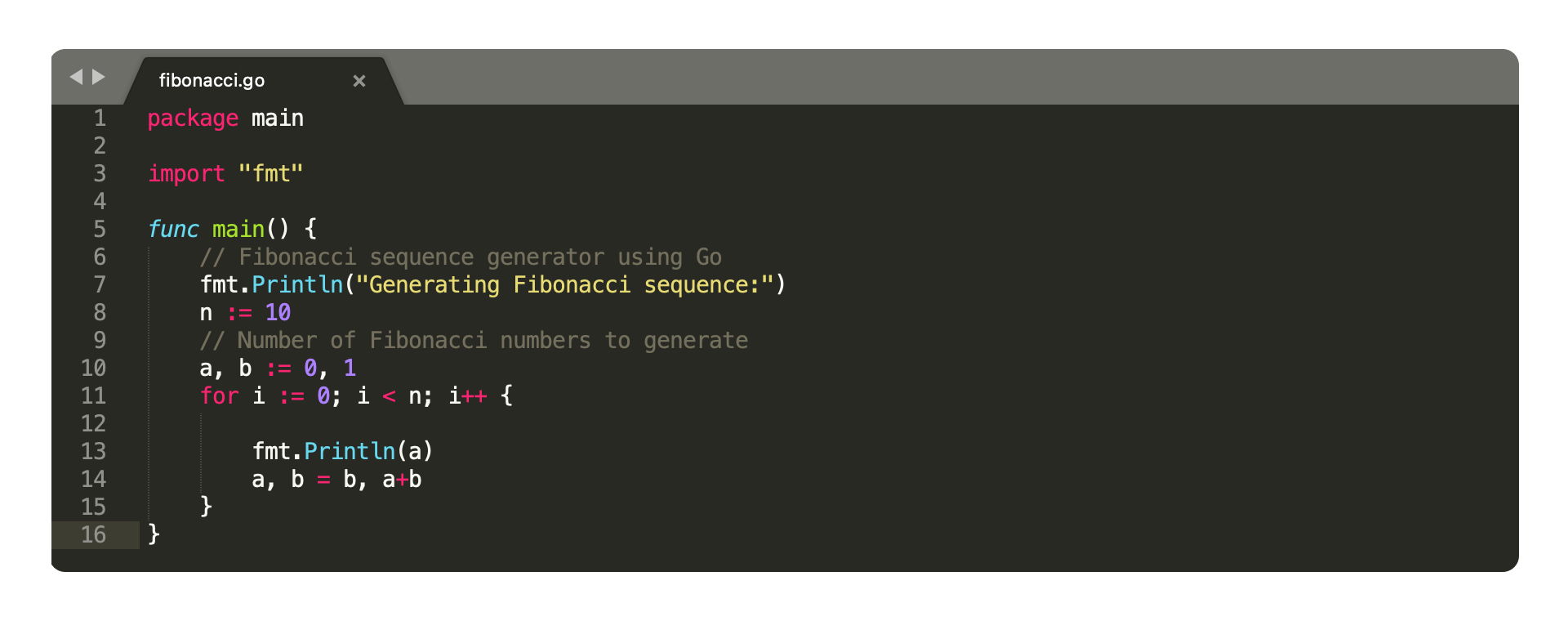
In this Go code, we're generating the Fibonacci sequence. The program prints the first 10 numbers of the sequence. Then, it utilizes a simple loop and variable swapping to calculate the numbers. The ‘fmt’ package is used for printing the output.
2. Worker pool pattern
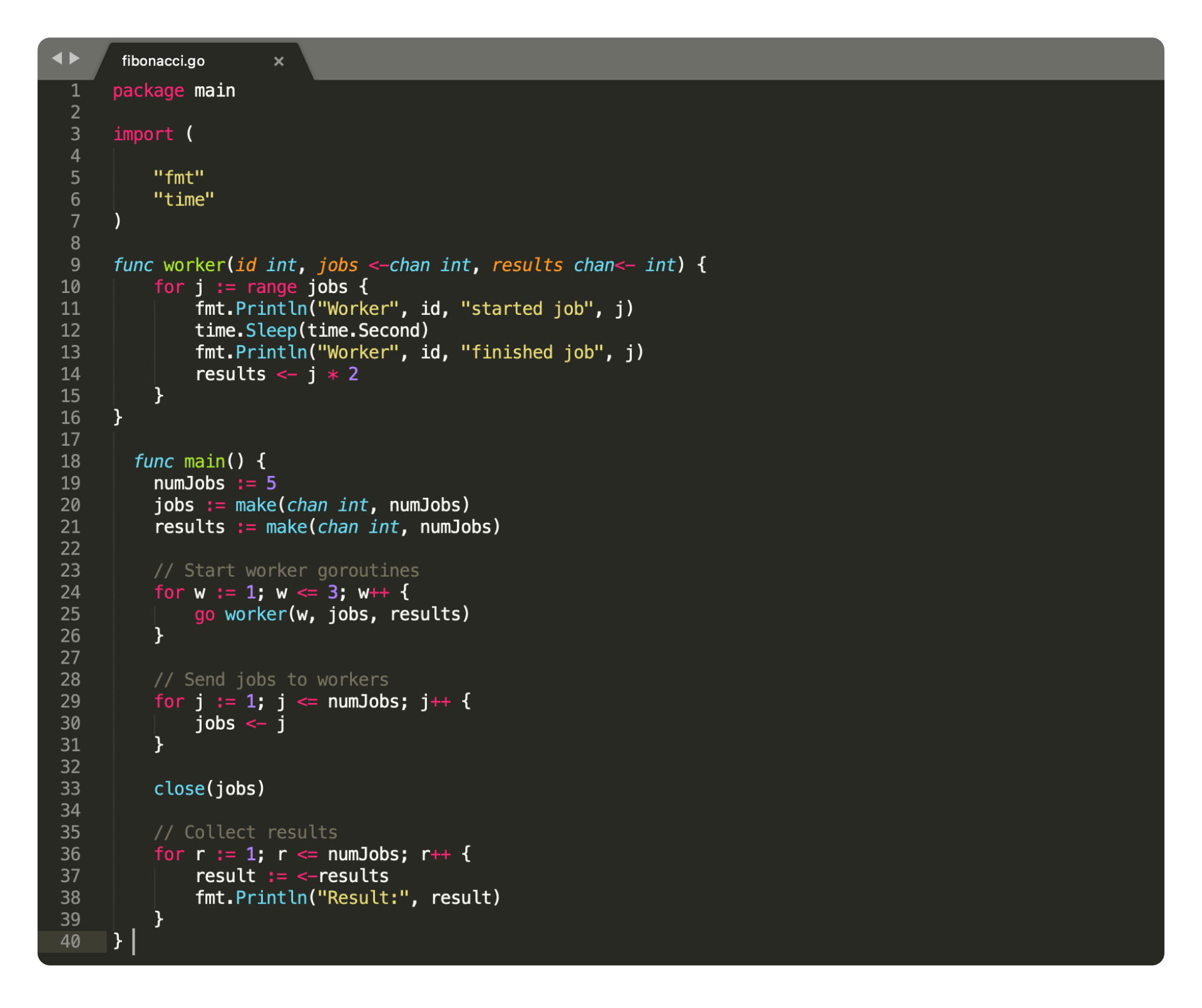
In this Go code example, we have a worker pool pattern. The primary function creates several worker goroutines and assigns jobs to them. Each worker receives a job from the jobs channel, performs the job (simulated by a sleep), and sends the result back to the results channel. The primary function then collects the results and prints them.
Rust examples
In the Rust examples, we'll examine a classic FizzBuzz program and a simple file I/O operation.
1. FizzBuzz program
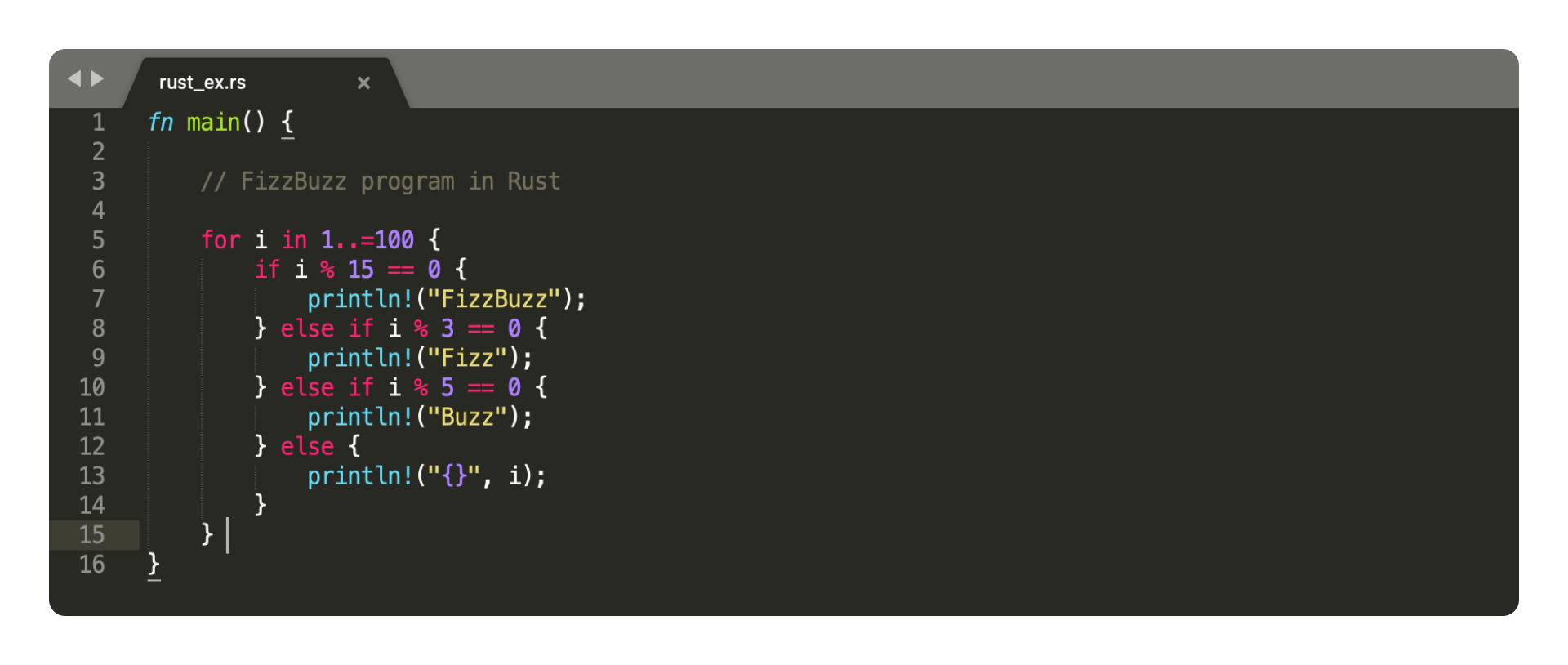
This Rust code demonstrates the classic FizzBuzz program. It prints numbers from 1 to 100, replacing multiples of 3 with "Fizz," multiples of 5 with "Buzz," and multiples of both 3 and 5 with "FizzBuzz." Rust's concise syntax and pattern-matching capabilities make the code clean and readable.
2. A simple file I/O operation
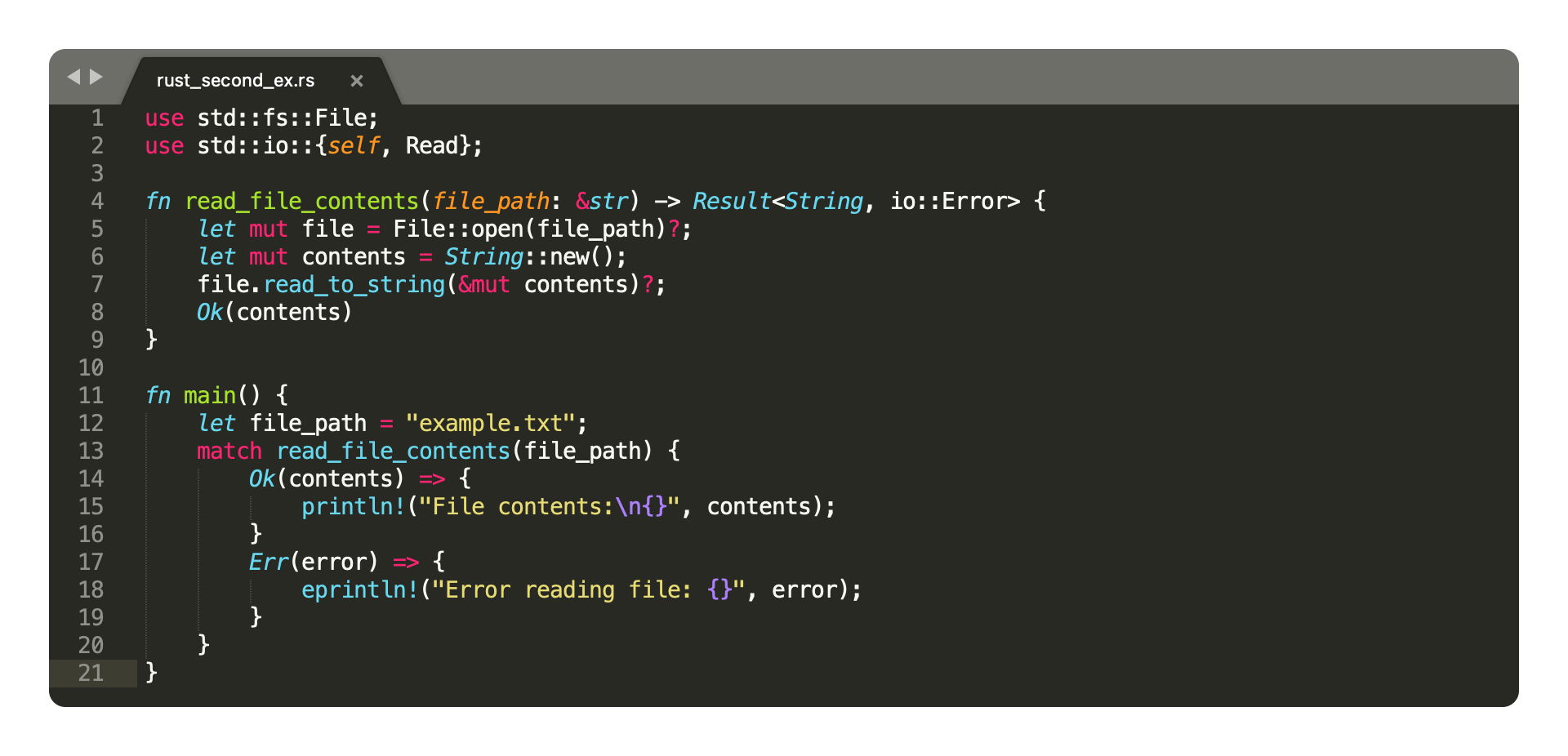
In this Rust code example, we have a function called 'read_file_contents' that takes a file path as input and attempts to read the file's contents. It opens the file, reads its contents into a string, and returns the result as a Result '<String, io::Error>.' The main function calls this function and handles the result, printing the file contents if successful or printing an error message if an issue reads the file.
This example demonstrates Rust's error handling with 'Result' and how it handles file I/O operations safely and concisely. In addition, it showcases Rust's focus on memory safety and its expressive error-handling capabilities.
A common example that demonstrates how the code in Go vs. Rust vary
Let’s see a simple web server example for both Go and Rust:
Go implementation
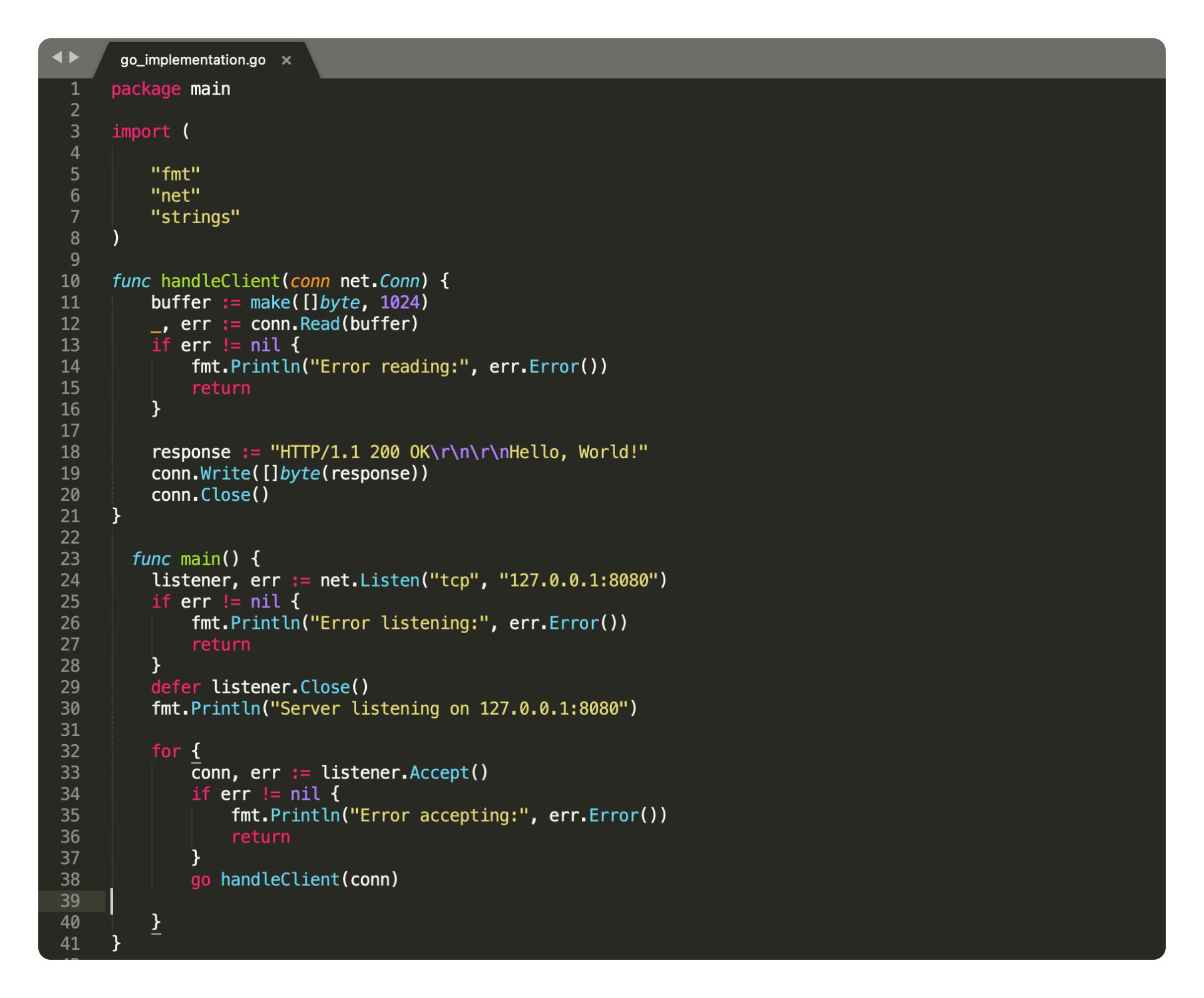
Rust implementation
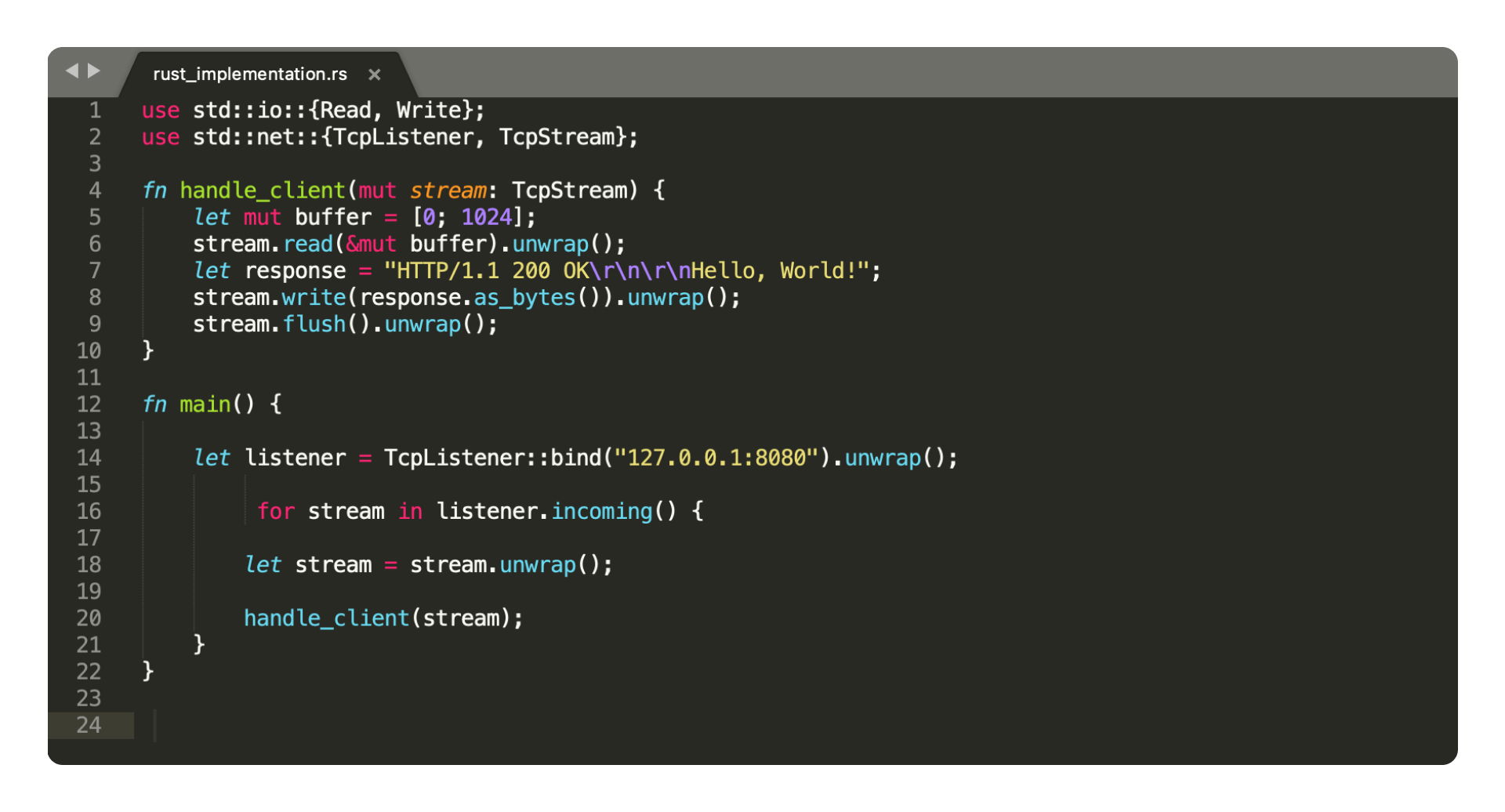
In both implementations, we have a simple web server that listens on '127.0.0.1:8080' and responds with a "Hello, World!" message.
Some key differences between the Rust and Go implementations:
1. Error Handling
Rust uses the 'unwrap()' function to handle errors by panicking if an error occurs, whereas Go utilizes explicit error checking using 'if err != nil' and returning early.
2. Syntax and concurrency
Rust's syntax is more explicit, with type annotations and semi-colons at the end of statements, while Go follows a more concise syntax. Additionally, Go utilizes goroutines (concurrent functions) for handling multiple client connections, whereas Rust uses separate threads.
3. Standard library
Rust and Go have different standard libraries, resulting in different methods and functions for similar tasks.
For example, Rust uses 'std::net' for networking, while Go uses the 'net' package.
4. Memory safety
Rust enforces memory safety through its system and borrows a checker, whereas Go relies on garbage collection.
This is not apparent in this particular example, but it's a significant distinction between the two languages.
These differences highlight how the choice of programming language can influence code structure, error handling, and concurrency handling.
For example, developers may choose Rust for its memory safety and control, while Go may be preferred for its simplicity and built-in concurrency support.
Clientele of Go
Go has garnered a strong following in the tech industry, with numerous prominent companies relying on its power and efficiency. Let's explore some leading players who have embraced Go and harnessed its action-packed capabilities to enhance their services and systems.
1. Google
Go was created by Google, and many of Google's services are built using Go, including parts of the Google Cloud Platform, Google App Engine, and Google Kubernetes Engine (GKE).
2. Uber
Uber utilizes Go for various purposes, including its microservices architecture, backend systems, and engineering tools.
3. Docker
Docker, the popular containerization platform, heavily relies on Go for its core components and backend services.
4. Twitch
Twitch, the live streaming platform, uses Go for building services related to chat, notifications, and internal tooling.
Clientele of Rust
Rust has captured the attention of major players in the tech industry who recognize its power, safety, and performance. Let's explore some notable companies that have chosen Rust to enhance their projects and provide action-packed solutions.
1. Mozilla
Mozilla initially developed Rust, and they continue to use Rust for projects like the Firefox web browser and the Servo browser engine.
2. Microsoft
Microsoft has embraced Rust for several projects, including components of the Azure cloud platform and the Windows operating system.
3. Cloudflare
Cloudflare uses Rust in its network stack for building high-performance and secure systems.
4. Discord
Discord's community communication platform has adopted Rust for its backend infrastructure and performance-critical components.
Face-off: Go vs. Rust
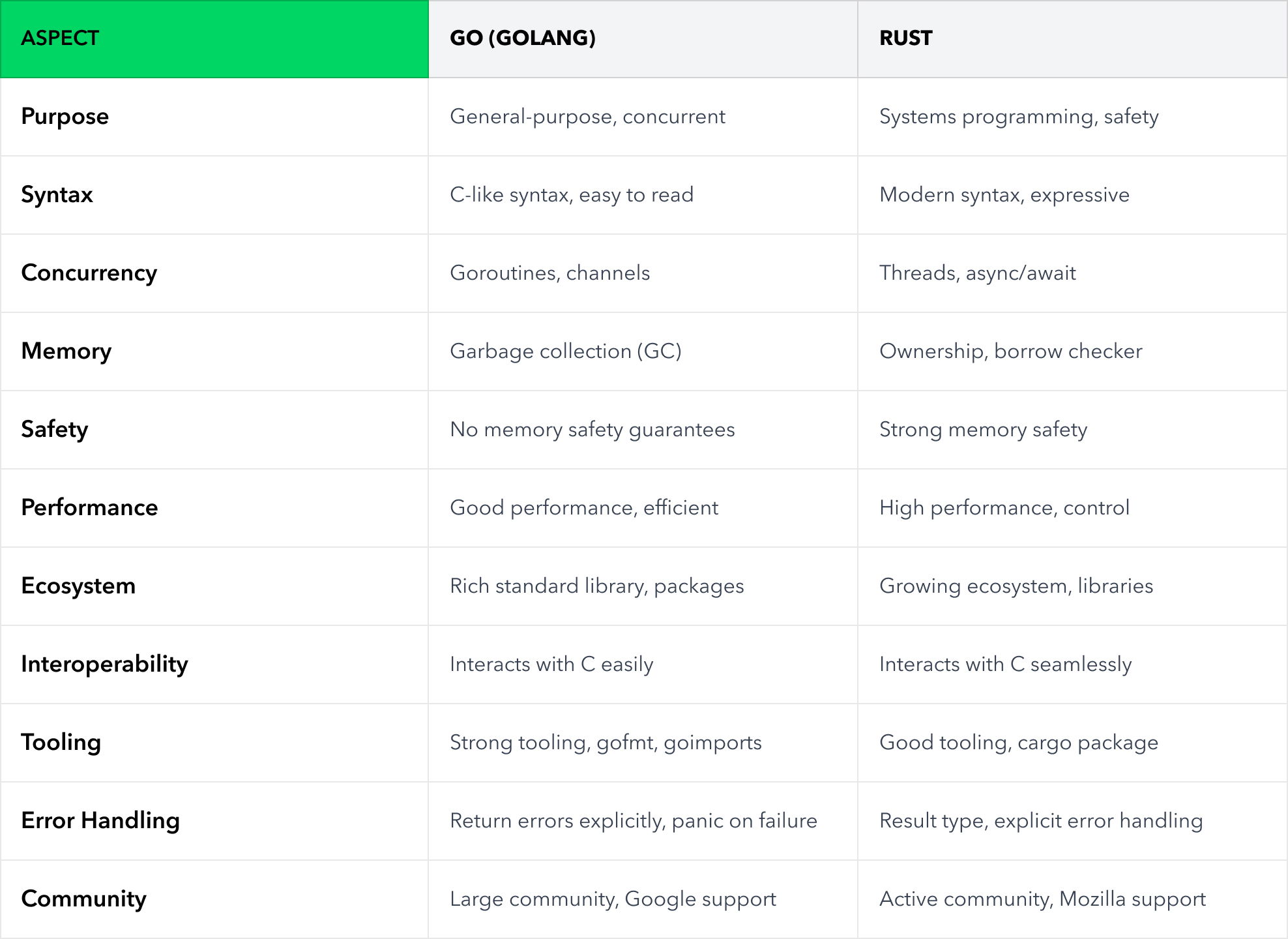
Level up your software development with Go and Rust: Choose the right language today!
Both Go, and Rust offers distinct advantages that can address specific needs in software development projects. If you're looking for simplicity, built-in support for concurrency, and scalability, Go is your go-to language. Meanwhile, if your project emphasizes safety, performance, and concurrency without sacrificing low-level control, Rust is an ideal choice.
Are you ready to harness the full potential of these powerful programming languages for your next big project? Contact us today! Rapidops' seasoned experts can guide you through decision-making, identifying the best language tailored to your needs. They'll support you in building robust, scalable, high-performance software systems, transforming your ideas into reality.
Go and Rust offers countless opportunities for software development. Don't let these opportunities pass you by! Take action now. Reach out to us and embark on your journey to success with Go and Rust.

Niyati Madhvani
A flamboyant, hazel-eyed lady, Niyati loves learning new dynamics around marketing and sales. She specializes in building relationships with people through her conversational and writing skills. When she is not thinking about the next content campaign, you'll find her traveling and dwelling in books of any genre!
What’s Inside
- What is Go?
- What is Rust?
- Features of Go (Golang)
- Preferred scenarios for choosing Go
- Features of Rust
- Preferred scenarios for choosing Rust
- Go examples
- Rust examples
- A common example that demonstrates how the code in Go vs. Rust vary
- Clientele of Go
- Clientele of Rust
- Face-off: Go vs. Rust
- Level up your software development with Go and Rust: Choose the right language today!

Let’s build the next big thing!
Share your ideas and vision with us to explore your digital opportunities
Similar Stories
- Engineering
- undefined Mins
- September 2022

- Engineering
- undefined Mins
- January 2016
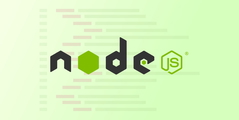
- Engineering
- 5 Mins
- November 2015
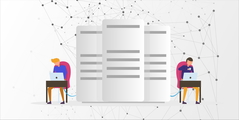

Receive articles like this in your mailbox
Sign up to get weekly insights & inspiration in your inbox.
